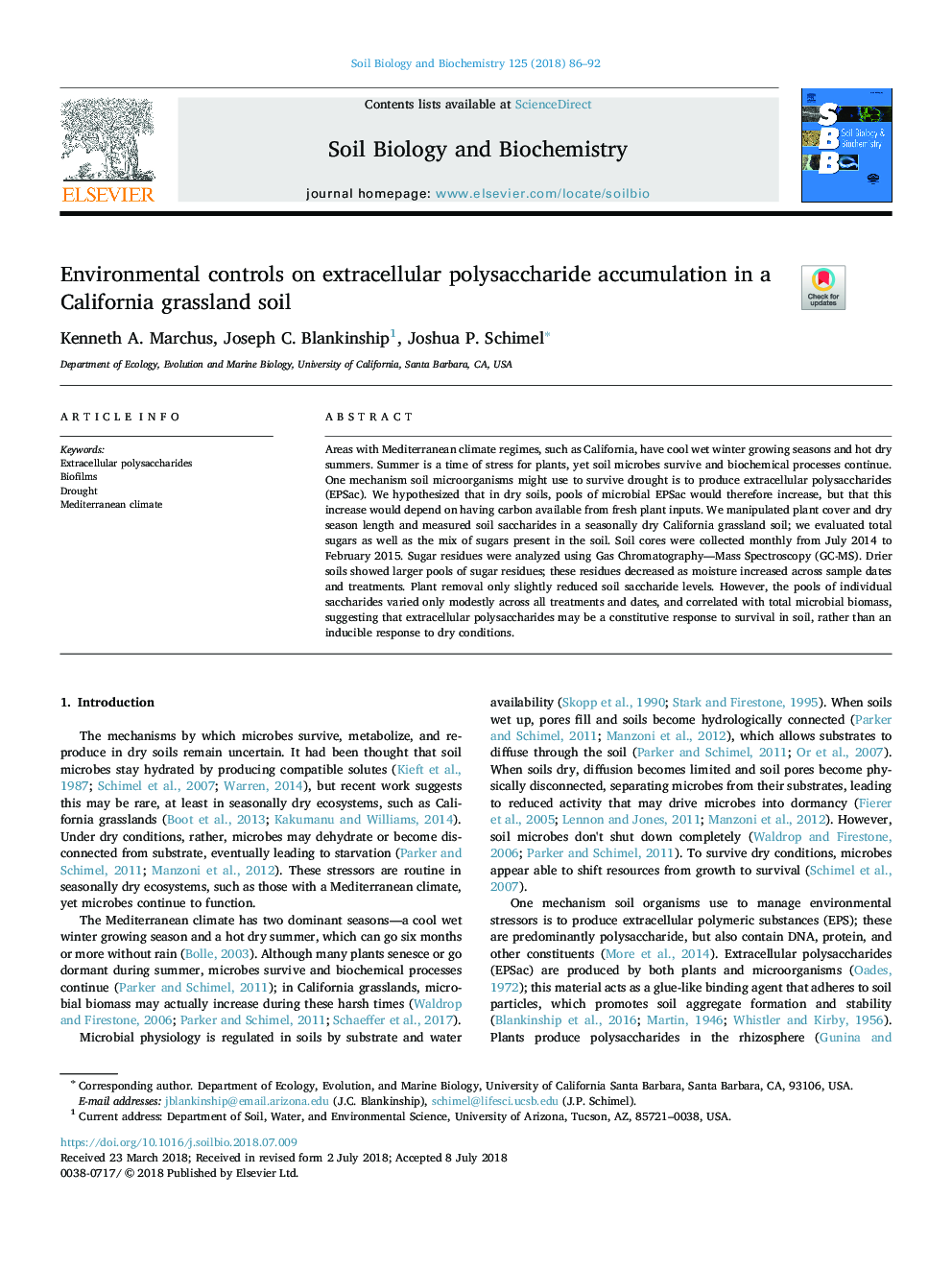| Article ID | Journal | Published Year | Pages | File Type |
|---|---|---|---|---|
| 8362436 | Soil Biology and Biochemistry | 2018 | 7 Pages |
Abstract
Areas with Mediterranean climate regimes, such as California, have cool wet winter growing seasons and hot dry summers. Summer is a time of stress for plants, yet soil microbes survive and biochemical processes continue. One mechanism soil microorganisms might use to survive drought is to produce extracellular polysaccharides (EPSac). We hypothesized that in dry soils, pools of microbial EPSac would therefore increase, but that this increase would depend on having carbon available from fresh plant inputs. We manipulated plant cover and dry season length and measured soil saccharides in a seasonally dry California grassland soil; we evaluated total sugars as well as the mix of sugars present in the soil. Soil cores were collected monthly from July 2014 to February 2015. Sugar residues were analyzed using Gas Chromatography-Mass Spectroscopy (GC-MS). Drier soils showed larger pools of sugar residues; these residues decreased as moisture increased across sample dates and treatments. Plant removal only slightly reduced soil saccharide levels. However, the pools of individual saccharides varied only modestly across all treatments and dates, and correlated with total microbial biomass, suggesting that extracellular polysaccharides may be a constitutive response to survival in soil, rather than an inducible response to dry conditions.
Related Topics
Life Sciences
Agricultural and Biological Sciences
Soil Science
Authors
Kenneth A. Marchus, Joseph C. Blankinship, Joshua P. Schimel,
